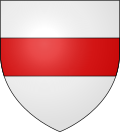Warneton
Appearance
Warneton | |
|---|---|
 The town hall in Warneton | |
| Coordinates: 50°44′52″N 2°57′12″E / 50.7478°N 2.9533°E | |
| Country | France |
| Region | Hauts-de-France |
| Department | Nord |
| Arrondissement | Lille |
| Canton | Armentières |
| Intercommunality | Lille |
| Government | |
| • Mayor (2016-2020) | Yvon Pétronin |
| Area 1 | 4.17 km2 (1.61 sq mi) |
| Population (2021)[1] | 234 |
| • Density | 56/km2 (150/sq mi) |
| Time zone | UTC+01:00 (CET) |
| • Summer (DST) | UTC+02:00 (CEST) |
| INSEE/Postal code | 59643 /59560 |
| Elevation | 11–25 m (36–82 ft) (avg. 20 m or 66 ft) |
| 1 French Land Register data, which excludes lakes, ponds, glaciers > 1 km2 (0.386 sq mi or 247 acres) and river estuaries. | |
Warneton (Dutch: Waasten) is a commune in the Nord department in northern France.
It is part of the Urban Community of Lille Métropole.
Bounding communes and places
- Warneton, Belgium (part of Comines-Warneton)
- Comines, east
- Quesnoy-sur-Deûle, southeast
- Deûlémont, southwest
History
It was constituted into two zones and had its own mayor and its council. It was merged on June 7, 1946 with Warneton-Sud and Warneton-Bas
Heraldry
 |
The arms of Warneton are blazoned : Argent, a fess gules. (the Béthune family and the communes of Cuts, Rosny-sur-Seine, Warneton and Noyon use the same arms.)
|
Population
| Year | Pop. | ±% |
|---|---|---|
| 2006 | 189 | — |
| 2007 | 189 | +0.0% |
| 2008 | 191 | +1.1% |
| 2009 | 198 | +3.7% |
| 2010 | 211 | +6.6% |
| 2011 | 224 | +6.2% |
| 2012 | 224 | +0.0% |
| 2013 | 225 | +0.4% |
| 2014 | 230 | +2.2% |
| 2015 | 234 | +1.7% |
| 2016 | 239 | +2.1% |
Points of interest
- A blockhaus, used during the advance of the Maginot Line.
People
References
- ^ "Populations légales 2021" (in French). The National Institute of Statistics and Economic Studies. 28 December 2023.
Wikimedia Commons has media related to Warneton.





